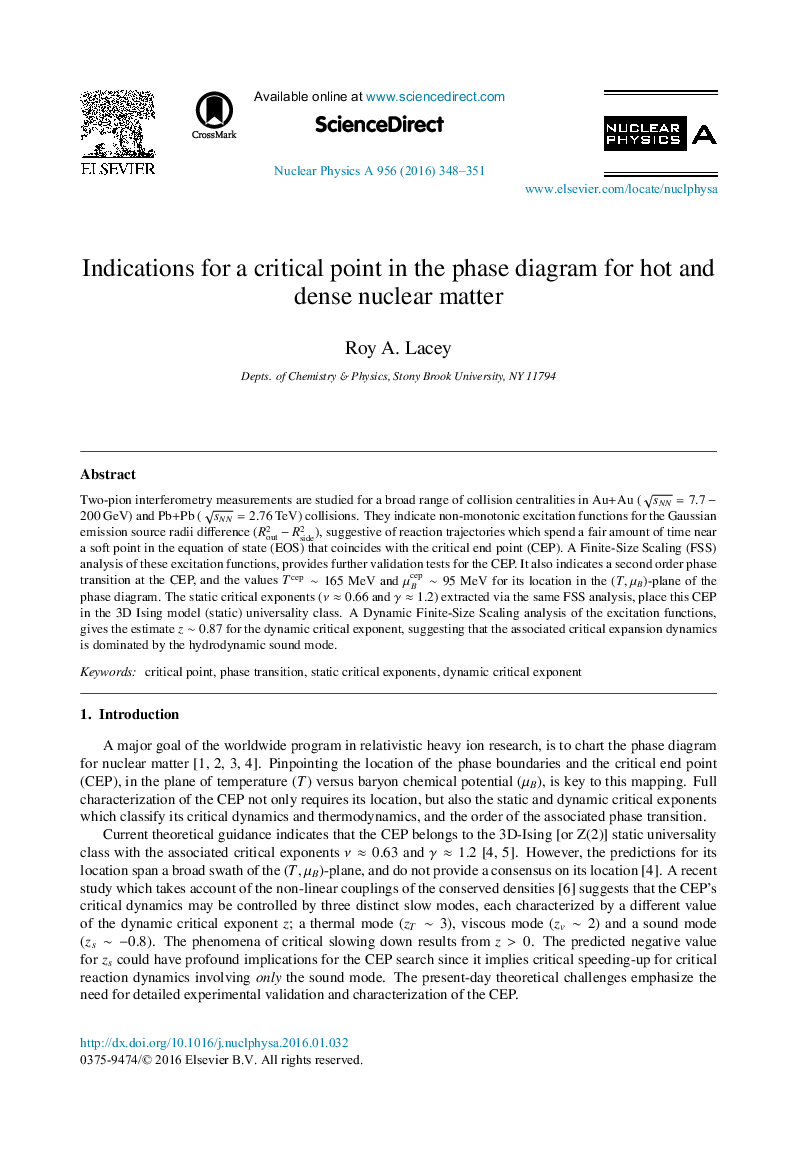| Article ID | Journal | Published Year | Pages | File Type |
|---|---|---|---|---|
| 5494194 | Nuclear Physics A | 2016 | 4 Pages |
Abstract
Two-pion interferometry measurements are studied for a broad range of collision centralities in Au+Au (sNN=7.7-200 GeV) and Pb+Pb (sNN=2.76 TeV) collisions. They indicate non-monotonic excitation functions for the Gaussian emission source radii difference (RoutâRside), suggestive of reaction trajectories which spend a fair amount of time near a soft point in the equation of state (EOS) that coincides with the critical end point (CEP). A Finite-Size Scaling (FSS) analysis of these excitation functions, provides further validation tests for the CEP. It also indicates a second order phase transition at the CEP, and the values Tcepâ¼165 MeV and μBcepâ¼95 MeV for its location in the (T,μB)-plane of the phase diagram. The static critical exponents (νâ0.66 and γâ1.2) extracted via the same FSS analysis, place this CEP in the 3D Ising model (static) universality class. A Dynamic Finite-Size Scaling analysis of the excitation functions, gives the estimate zâ¼0.87 for the dynamic critical exponent, suggesting that the associated critical expansion dynamics is dominated by the hydrodynamic sound mode.
Related Topics
Physical Sciences and Engineering
Physics and Astronomy
Nuclear and High Energy Physics
Authors
Roy A. Lacey,
